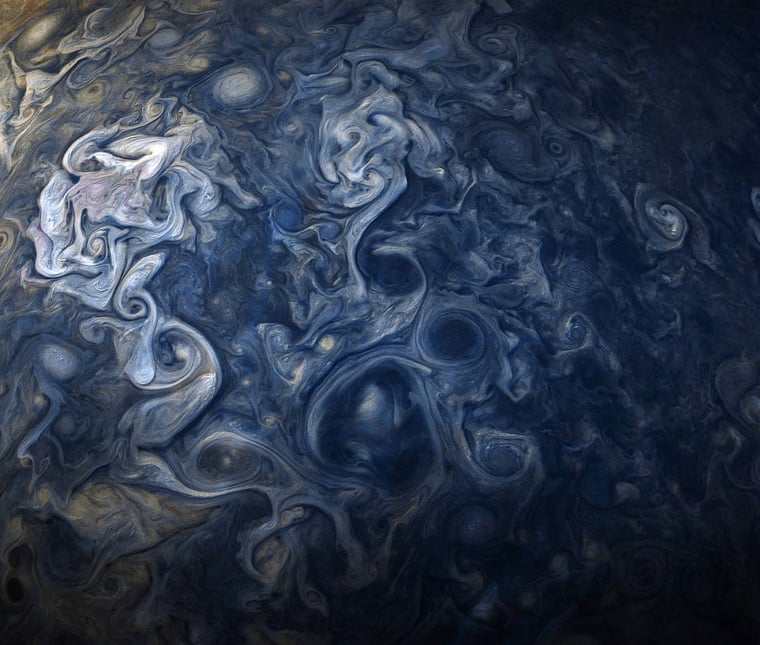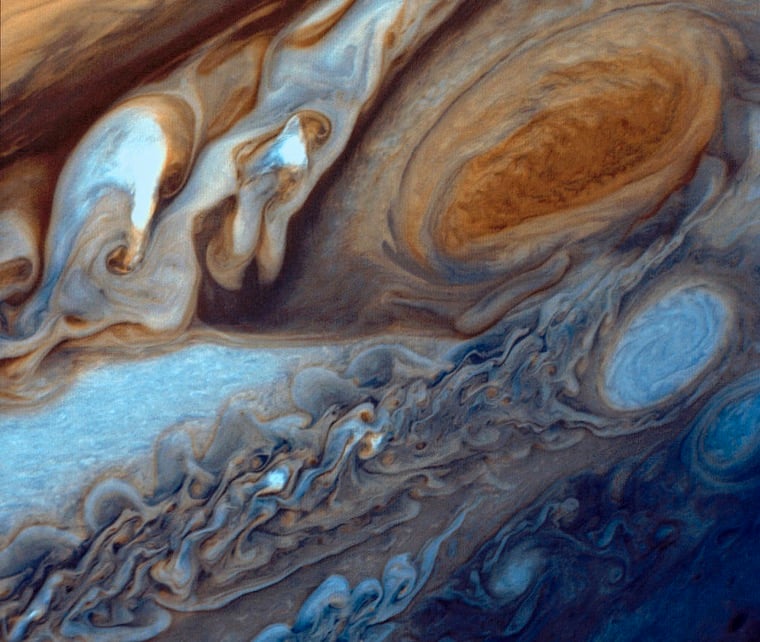New Science from Jupiter
Since Juno’s 2016 arrival in orbit of Jupiter, we’ve been marvelling at the pictures of the astonishing cloud formations and colours. This week NASA released a new video, explaining some of what they are discovering or hypothesizing about the internal systems and working of the planet.
What’s striking about Jupiter’s polar storms is that there are actually multiple cyclones at each pole. So instead of having one polar vortex like Earth, Jupiter was observed to have as many as eight giant swirls moving simultaneously on its north pole and as many as five on its south pole.
Liquid metallic hydrogen!
Deep inside Jupiter, high temperatures and crushing pressures transform Jupiter’s copious supplies of gaseous molecular hydrogen into an exotic form of matter known as liquid metallic hydrogen. Think of it as a mashup of atomic nuclei in a sea of electrons freely moving about. Jupiter’s powerful magnetic field almost certainly springs from dynamo action in Jupiter’s interior, the process by which the motion of this electrically-conducting fluid is converted into magnetic energy. The exact location within the interior is a mystery that researchers are still working to solve.
Self-generated auroras.
Jupiter’s magnetic field is home to the biggest and most powerful auroras in the solar system. Unlike Earth, which lights up in response to solar activity, Jupiter makes its own auroras. It does this by tapping into power generated by its own spinning magnetic field. Induced electric fields accelerate particles toward Jupiter’s poles where the aurora action takes place.
Recent results from Juno’s Gravity experiment show that Jupiter’s iconic belts and zones rotate as a series of cylinders down to depths of about 3000-5000 km. Beneath this depth, it appears that Jupiter may be rotating as a rigid body.







Stay Connected